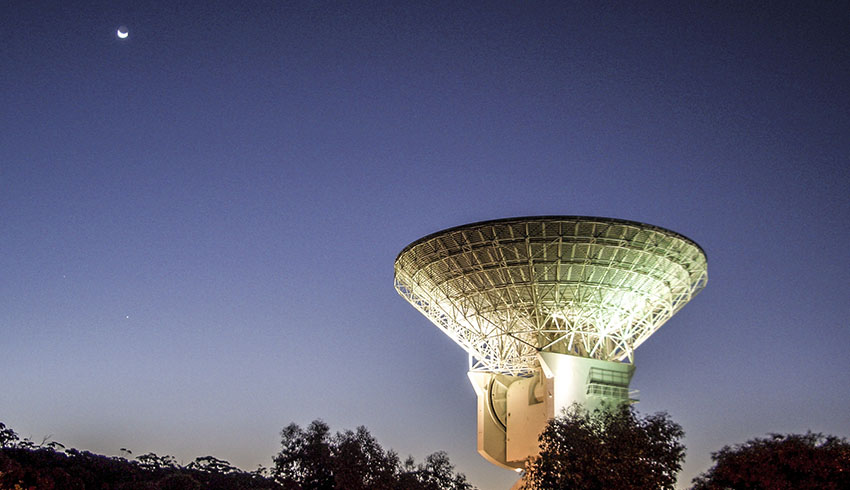
Last week, the 35-metre dish at New Norcia, WA, communicated with the Mars Express and the ExoMars Trace Gas Orbiter (TGO), both orbiting around Mars.
ESA said talking with two voices at two different frequencies ensured the signals sent didn't interfere with each other.
“The successful test is an important step in increasing the flexibility of ESA’s Estrack network of antennas across the globe, to find, control, or receive data from missions across space,” it said.
Like the NASA Deep Space Network with its tracking stations in Australia, the US and Spain, Estrack features a series of stations around the world. The facility at New Norcia, 130 kilometres north of Perth, is operated by the CSIRO.
ESA said the vast majority of communications between Earth and space involved a single antenna on the ground, one spacecraft in orbit or out in the solar system, and signals at a particular frequency.
In cases where several spacecraft are located in one part of the sky, it is possible for an antenna to see all of these spacecraft at once.
ESA ground stations have four receivers so they can in principle receive data from up to four spacecraft simultaneously.
This technique, called multiple spacecraft per aperture (MSPA), is used routinely by ESA’s Estrack and NASA's Deep Space networks.
However, MSPA only works one way.
While it allows the ground station to receive data from multiple spacecraft, it can only speak to one at a time. That is until now.
The recent test with the New Norcia ground station, the first of its kind, saw the deep dish use both transmitters at the same time to control Mars Express and ExoMars TGO.
Normally, these two Martian orbiters receive their command signals on similar X-band frequencies (between 8-12 GHz) but from different stations or using one station at different times.
However, Mars Express can also receive signals in the S-band (2.8 GHz), which until now has been saved for emergencies.
ESA said a perfect alignment of events – two spacecraft close in the sky able to receive signals at different frequencies and a deep space station able to send both telecommand signals simultaneously – made it possible to combine ‘MSPA with multiple uplink per aperture (MUPA) in an ESA first.
“Historically, there hasn't been a need to use one dish to command multiple simultaneous missions, as there wasn't such a demand on the antennas,” ESA said.
“However, ESA's global network of antennas, Estrack, is running at peak capacity, meaning that the antennas can't fully serve the needs of all missions until the network capacity is increased.”
Deep space missions have the added problem that they require large antennas, of which there are only three (for now) in the Estrack network, in Australia, Argentina and Spain.
It’s getting busy around the Red Planet. For many years, Mars Express was one of only three spacecraft orbiting Mars.
Now there are seven such orbiters operated by various space agencies, with more on the way.
Anyone interested can contact [email protected], for detailed syllabus, pricing and testimonials.
Receive the latest developments and updates on Australia’s space industry direct to your inbox. Subscribe today to Space Connect here.












